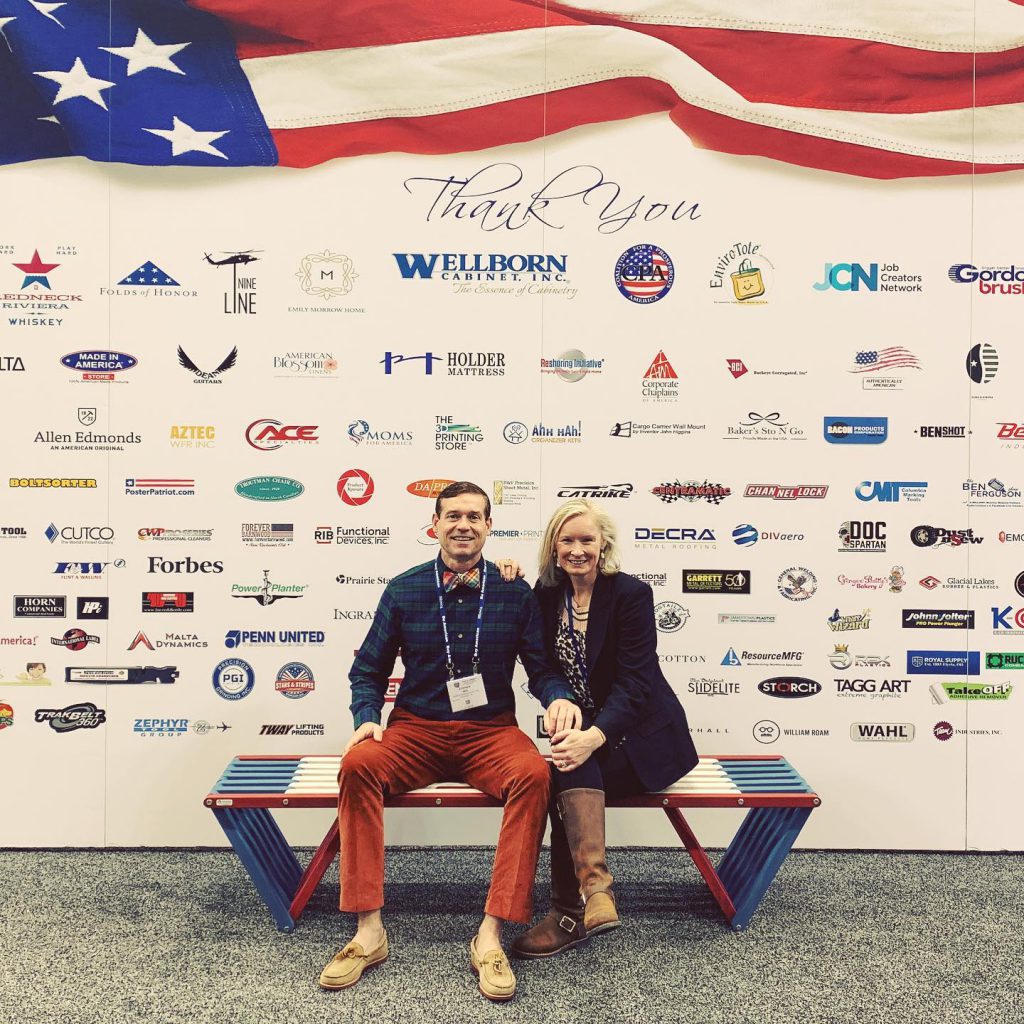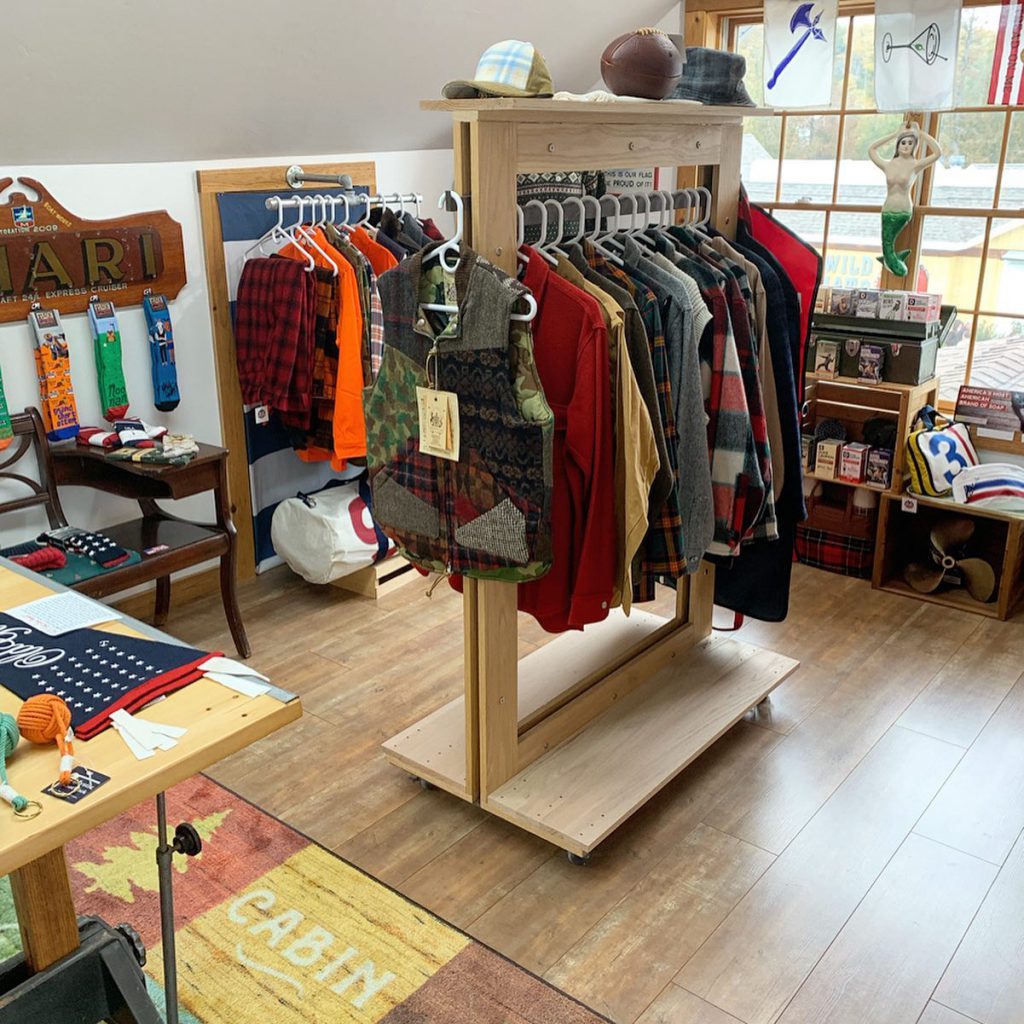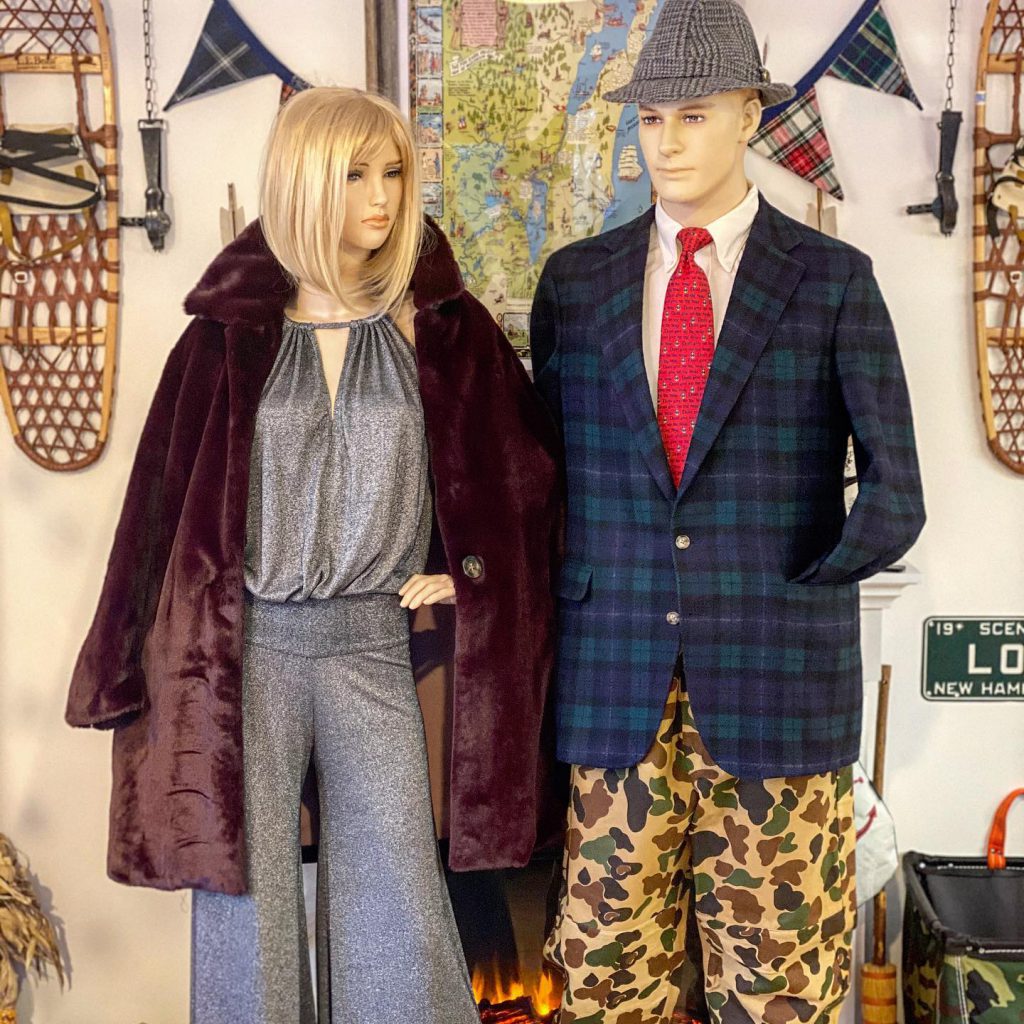
First they challenged themselves, then launched the Stars & Stripes Collective to challenge others.
In recent years, “Made in America” has become fashionable again, especially in the fashion industry. But most apparel is still made overseas.
In 1960, 95 percent of the apparel Americans purchased was American-made. Today, just 2 percent of apparel sold each year in the United States is manufactured in the United States, according to the American Apparel and Footwear Association.
In 2011, Jennifer and Stephen Imig heard the message of “Made in America,” and challenged themselves to buy only American-made products. They knew American apparel manufacturing had moved overseas, often made by workers earning low-wages and working without any labor or environmental protections.
But the Imigs weren’t satisfied. In 2013, the couple decided to take up the fight.
They launched an Instagram account called the Stars & Stripes Collective to help consumers find clothing and household items that are Made in America. After five years on the social media platform, the two opened a brick-and-mortar store north of Green Bay, Wis., in Door County in 2018.
“What I tell people is we are not going to move the dial significantly, but if we could get that dial just up to 10 percent, it makes a world of difference,” Jennifer Imig said. “We’ll never go back to the way it was in the ‘60s and ‘70s, but just to get it moving in a positive direction is a win in my eyes.
“That’s where the education comes in and sometimes, I think people feel that they don’t have a say, or it just doesn’t make a difference, but it really does. We just see it in our little corner of the world. The difference is that people talk about it now, and the fact that you just get people not mindlessly purchasing and becoming what we call a little bit more label conscience.”

The Imigs have discovered a noticeable difference since opening the brick-and-mortar store, which is located in a resort area that is often referred to as “The Cape Cod of the Midwest.” The store’s visitors want that old-time customer service, and want to know what fits, making sure the material is high quality.
“Some of the items we sell are upcycled or repurposed, and has a social responsibility that’s resonating with the younger generation,” Stephen Imig said. “We want to let our customers know, yeah, you are going to pay a little more, but it’s worth it.
“If you buy a cheap shirt you are going to buy that same shirt one, two or three times, but the Made in America clothes last. A lot of those old-time companies that moved overseas are coming back, because they see these entrepreneurs and the American Dream of making it here.
“Sears is making its tools here again. Wrangler is starting to make jeans here again. When we started our blog, we were introducing our customers to these smaller brands that were Made in America and a lot of the time it’s less expensive than the American brands that had moved overseas.
“So, we are trying to repair that link between the customer and the manufacturer, and they are starting to tell their story a little better because if you don’t have a story, why would anybody switch their buying habits?”
When the Imigs learned the stories of the major garment brands they wore years ago – L.L. Bean, Lands End, Ralph Lauren, Nautica, Woolrich – they began to look at the companies’ history and where they were being manufactured today.
“I don’t know if it’s old age or wisdom, but they used to be so expensive, and now I look and say, ‘I can’t believe it is still so expensive because it is obviously Made in China,’” Jennifer Imig said. “The reason it is Made in China is the cost of labor and the environmental regulations and things like that contribute to why it is made over there.”
As Stephen Imig pointed out, just because companies pay workers overseas less doesn’t mean there isn’t a cost.
“Really, it’s not that much more affordable anymore, with shipping it halfway around the world,” Stephen Imig said. “You are talking to so many people. Just the time it takes to ship it overseas and the conference calls at 3 o’clock in the morning, and some of the orders are messed up, and they have a thousand of these pieces they can’t do anything with. It is just a nightmare.
“Not only that, you bring your product over there and they are ripping it off and the next thing you know you are competing with somebody you are supposed to be in business with.”

But Stephen Imig believes the final responsibility comes down to the decision of the consumer. If you go into a purchase with the background education, it is the customer that determines if the lesser cost is worth it.
The Stars & Stripes Collective is there to help consumers make better choices.
“It is more of a lifestyle, and giving people an opportunity to seek other small makers and one-offs and smaller brands and things like that,” Stephen Imig said. “I wear a lot of vintage like Woolrich and Pendleton, L.L. Bean. My section in my men’s department are all clothes that still have the tags on them from the old brands.
“There are so many clothes out there that the fashion industry is the second largest polluter behind big oil, just because everything is wasted. So, having the tag on it from the ‘80s that no one loved it enough to take the tags off and wear it. We are still trying to educate the consumer.
“For 40-some years the American consumer has been brainwashed into buying things only when they are on sale. They don’t actually love it; they just think they are getting a good deal and the clothes just sit in their closet. From production to storage, like a Nordstrom, they hold onto it and at the end of the season, it is 70 percent off and that goes right in the consumers closet and goes on over and over again. We are trying to break that cycle and disrupt the fashion mindset. It’s just that mindset. Don’t buy it if you actually don’t need it.”
The Imigs are aiming to reverse that trend, one consumer at a time.
“It’s fashion-based but its fair wages, it’s environmental protection, it’s a lower carbon footprint, it’s keeping your neighbor employed, and a lot of people have lost that,” Stephen Imig said. “And we are trying to bring that back.”
Editor's Note: Blogs like this one are intended to highlight companies that support American jobs and that make great products in the United States. We rely on companies we feature to provide accurate information regarding their domestic operations and their products. Each company is individually responsible for labeling and advertising their products according to applicable standards, such as the Federal Trade Commission's "Made in USA" standard or California's "Made in USA" labeling law. We do not review individual products for compliance or claim that company products comply with specific labeling or advertising standards. Our focus is on supporting companies that create American jobs.
